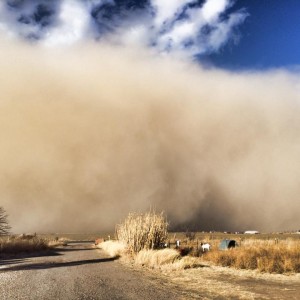Federal Water Tap, May 12: U.S. Forest Service Proposes Groundwater Management Rules
Filling a gap in its mission, the U.S. Forest Service is adding a chapter on groundwater to its water resources management manual.
The primary goal for the groundwater policy is to preserve rivers and streams while ensuring groundwater is available in the future. To achieve this, the USFS proposes an unusual water policy caveat: it will assume that groundwater contributes to river flows, unless proved otherwise.
Specific items in the proposed policy include:
- Measuring and reporting all groundwater withdrawals for public drinking water and by high-capacity wells. The same rules apply for water injected underground.
- Developing standards for the use, protection, and conservation of groundwater.
- For mining, energy, and infrastructure developments on USFS land, assessing the effects on groundwater resources prior to authorization.
- Encouraging the use of groundwater over surface water for facilities within a National Forest.
Public comments are being accepted through August 4. Email them to fsm2500@fs.fed.us. The USFS will hold a webinar May 20 at 1 p.m. Eastern to discuss the new policy.
Water-Energy Nexus
Senator Lisa Murkowski released a white paper on the connections between water and energy use.
The Alaska Republican acknowledges that conservation plays a role in reducing demand for both resources, but she also promotes technological fixes: new power plant cooling systems, low-energy desalination, biofuel inputs that require less water. She recommends better data on water use by power plants, energy-efficient technologies, and federal coordination.
Murkowski has introduced legislation to this end. A bill introduced in January proposed the creation of a cabinet committee to coordinate federal goals for water use and energy production. The bill has not been acted on.
Water Resources Bill
House and Senate negotiators announced that they reached a deal on a $US 8.2 billion bill to authorize funding for the nation’s ports, flood control systems, and hydropower dams. According to The Hill, the bill might be put to a vote this week.
Fracking Chemicals
Energy companies use a mix of water, sand, and chemicals, injected underground at high pressure, to release oil and gas in shale rock. Getting information about the chemicals in the mash bill has been a top priority for environmental and public health groups.
Now the Environmental Protection Agency is asking the public whether companies should disclose their recipes voluntarily or under the sterner eye of federal regulation. To induce voluntary cooperation, the agency is mulling a third-party verification program, incentives (not defined), and a recognition program akin to the gold stars handed out in second grade classrooms for good behavior.
The EPA is asking the public for more direction. Comments are being accepted for 90 days at www.regulations.gov, referencing docket number EPA-¬HQ-OPPT-2011-1019.
Pesticides in Drinking Water
The EPA is changing how it estimates the amount of pesticides in drinking water. The agency uses computer models to do this, and it is adding more detail to one of the model inputs – the percent of land that is covered by crops.
The EPA used to estimate cropped land by hydrologic region, a standard classification system used for rivers across the U.S. The new method considers the watershed from which the community actually draws its water. Comments on the change are being accepted through July 8 and can be submitted via www.regulations.gov, referencing docket number EPA-HQ-OPP-2013-0442-0001.
Bristol Bay Investigation
The EPA’s internal watchdog is investigating how the nation’s top environmental regulator handled an environmental assessment of mining in Alaska’s Bristol Bay watershed.
The Office of the Inspector General is requesting from the EPA a timeline of its activities while completing the assessment, a list of agency personnel involved, the stakeholders they interacted with, and an accounting of the assessment’s costs.
Bristol Bay is the world’s most productive sockeye salmon fishery, and in February the EPA said it would use its authority under the Clean Water Act to block the development of the Pebble copper mine in the bay’s upper watershed.
Republicans on the House Oversight and Government Reform Committee requested the investigation.
Federal Water Tap is a weekly digest spotting trends in U.S. government water policy. To get more water news, follow Circle of Blue on Twitter and sign up for our newsletter.
Brett writes about agriculture, energy, infrastructure, and the politics and economics of water in the United States. He also writes the Federal Water Tap, Circle of Blue’s weekly digest of U.S. government water news. He is the winner of two Society of Environmental Journalists reporting awards, one of the top honors in American environmental journalism: first place for explanatory reporting for a series on septic system pollution in the United States(2016) and third place for beat reporting in a small market (2014). He received the Sierra Club’s Distinguished Service Award in 2018. Brett lives in Seattle, where he hikes the mountains and bakes pies. Contact Brett Walton





Leave a Reply
Want to join the discussion?Feel free to contribute!